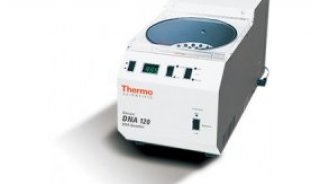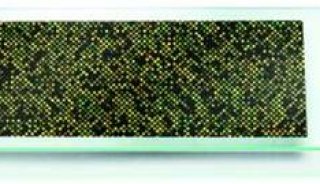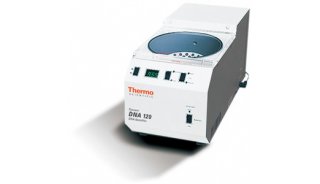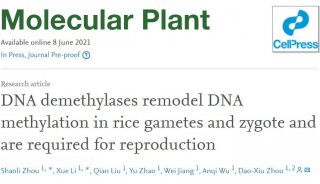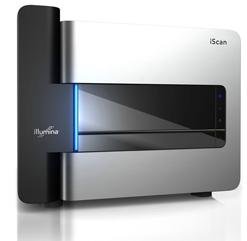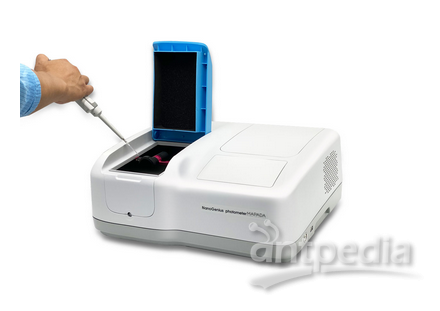DNA甲基化分析
The influence of methylation on the promoter activity and gene expression and the involvement of DNA methylation in carcinogenesis caused an extensive research of methylation processes and it's influence on the genome functioning. Analysis of DNA methylation became a routine method during the last decade. I worked with methylation extensively during my PhD studies and tried several methods. Here I place examples of 3 main approaches for methylation analysis. All these methods I have used personally, therefore if you have any questions don't hesitate to contact me.
| Methylation analysis using restriction enzyme digestion |
Contributed by A. Gratchev
This is a classical method of methylation analysis based on the property of some restriction enzymes to be unable to cut methylated DNA. Since in eukaryotic DNA (or actually in mammalian DNA) only cytosine in CG context can be methylated, the restriction enzymes with CG sequences within their restriction sites come in question. Two classical enzyme pairs are HpaII - MspI (CCGG) and SmaI - XmaI (CCCGGG). Since the second recognition sequence is much more rare than the first one I will concentrate on the HpaII-MspI pair. Both enzymes recognize CCGG sequence, however HpaII is unable to cut DNA when the internal cytosine is methylated. This property makes HpaII-MspI pair to a valuable tool for rapid methylation analysis.
This method has some weak points. First is that not all CG are located within CCGG sequences, that means many potential methylation sites will be overlooked. Another problem is a necessity of a Southern blot hybridisation which is not uncomplicated. However it is still a good method to get a first idea if the methylation is involved in the phenomenon you observe.
Before you proceed with a methylation analysis you have to analyse your sequence very carefully. If you'll just take genomic DNA, digest it with HpaII, blot and hybridise with selected probe the result will be very complicated. With 200 bp probe you can obtain myriad of bands which you will not be able to interpret. Therefore first of all define the region of interest flanked with restriction sites for CG methylation insensitive enzymes (BamHI for example), and containing not more than 5-6 sites for HpaII. The probe used for Southern blot hybridisation should be located within this region and cover it completely or partially (see the figure).

Even in this case when you will use the probe A the number of fragments will be relatively high (try to count them if you make complete digestion with BamHI and then - incomplete with HpaII). Probe B will give you less complex picture, but actually the same information. Another problem is the size of the fragments you usually obtain. If you have a CG rich region, then HpaII restriction fragments will be in the range 100-500 bp. For this fragment range you will need 1.2% agarose and such gels are relatively difficult to blot. However this method seems to be simpler and faster to establish than bisulphite treatment.
Protocol
Isolate genomic DNA with any method that produce DNA of sufficient for restriction digestion quality.
Digest 10 µg of DNA overnight with a first enzyme, cutting out the fragment of interest in combination with HpaII, and another 10 µg with first enzyme in combination with MspI. Reaction volume should be about 50 µl.
Inactivate the enzymes by heating (look in the data sheet of the manufacturer for inactivation protocol).
Reduce the sample volume to about 20-30 µl in the vacuum concentrator. Do NOT dry the DNA you will not be able to dissolve it again!
Add required volume of loading buffer and load the samples onto the 1.2% agarose/TAE gel. Usually a 20 cm long gel is enough. The wells in the gel should be 5-7 mm wide for the better quality of the bands.
Run the gel at 1-2 V/cm.
Perform standard Southern blotting and hybridisation.
The bands in MspI digested sample lane should represent a complete digestion of your DNA with first enzyme and MspI, and should serve as a control for the digestion completeness and the absence of mutations.
Determine the sizes of the bands in HpaII digested samples and find the corresponding restriction sites in the sequence.
Do not expect to obtain a clear cut results. Usually cell lines and especially tissues are polyclonal and contain mixed methylation patterns, therefore your band pattern will be also complex.
| Analysis of methylation by bisulphite sequencing |
Contributed by A.Gratchev
This method allows precise analysis of methylation in a certain region by converting all nonmethylated cytosines into tymines, while methylated cytosines remain unchanged. This method requires small amount of genomic DNA and therefore seems to be very useful for the analysis of clinical samples, where the material amount is limited. However I suggest optimising the method using genomic DNA from a cell line and then apply it to valuable samples.
Before starting the experiment you have to develop primers for bisulphite converted DNA. You can generate a model of bisulphite treated DNA by substituting all cytosines which are not in CG context into tymines. And then design your primers in the way that they don not contain any CG. If this is impossible, you have to use C/T at the place of C in CG context. Usually primer selection is the most critical in bisulphite based methylation analysis, since the complexity of DNA is reduced. Therefore I would suggest to select 2-3 pairs of primers, check them on bisulphite modified DNA, and use the most specific ones.

Protocol
Isolate genomic DNA with the quality sufficient for restriction enzyme digestion.
Digest DNA (50 to 200 ng) with any enzyme which does not cut the region of interest, but resulting in as short fragments as possible in smallest possible volume. Note: increasing the amount of DNA will make denaturing not efficient enough and therefore make bisulphite reaction incomplete!
Stop the reaction by boiling DNA for 5 min.
Add 10N NaOH to 0.3N final concentration and denature DNA 37° C for 15 min.
Prepare 4-5 eppendorf tubes with cold mineral oil.
Add 2x volume of 2% low melting agarose to the DNA solution, mix by pipetting up and down.
Form agarose beads by pipetting 10 祃 aliquots of DNA/agarose mixture into cold mineral oil. Note: Don't pipett the second aliquot in the tube where you already have one bead!
Transfer beads in the tube containing 1 ml of modifying solution (5M sodium bisulphite (2.5M sodium metabisulphite), 100mM Hydroquinon).
Incubate the tubes 4 h at 50° C in the dark.
Wash the beads 6 times for 15 min in TE pH 8.0.
Complete the modification by incubating the beads 2 times for 15 min in 0.2 N NaOH.
Wash the beads 3 times for 15 min in double distilled H2O.
Use one ul of the obtained DNA for PCR with selected primers.
Obtained PCR product can be sequenced directly, in this case you will obtain more or less reliable results about the percentage of methylated cytosine in every position. Another possibility is to clone the product and then sequence 10 or more individual clones. This method is much more time consuming. Third method which can be used for the analysis of bisulphite treated DNA is Single Nucleotide Primer Extension (SNuPE).
| Single Nucleotid Primer Extension (SNuPE) |
Contributed by A.Gratchev
Single Nucleotide Primer Extension is a powerful method which can be used for the precise analysis of methylation in a certain position. The procedure is shown on the figure. You treat your DNA with bisulphite and then anneal a primer which ends immediately before the site of analysis. Then you perform two primer extension reactions, one with radiolabelled dCTP (ddCTP) and another with dTTP (ddTTP). In this reactions only one nucleotide will be added to the primer. Then you have to denature your reaction, run your products on acrylamide gel and analyse the activity of the labelled primer. This method can also be adapted for the use with fluorescence labelled nucleotides or terminators.
The primers for SNuPE should be defined to bisulphite treated sequence. If the primer contains a CG sequence you have to use (Y=C/T) at the position of C.

Protocol for 32P labelled nucleotides
Treat the DNA with bisulphite as described and amplify the region of interest.
Purify the desired fragment with any amplimer purification protocol taking care that no nucleotides remain in the reaction.
Prepare two reactions containing the same amount of PCR product, 1xPCR buffer, 1 pM of the primer, 1 U Taq polymerease and 1uCi of 32P dCTP or dTTP in 20 ul final volume.
Run the following program: denaturing at 95° C, 1 min; annealing at the Tm of the primer, 2 min; extension at 72° C, 2 min.
Transfer the samples on ice and add 4ul of formamide loading buffer to each sample.
Denature the samples for 2 min at 95° C and load on preliminary pre-run 10% acrylamide gel containing 1xTBE and 7 M urea.
Run the gel at 40-45 mW/cm2 for 30-40 min (BioRad Protean II system).
Dry the gel on a vacuum dryer for 2 h at 80° C.
Perform autoradiography for 10 min to 2 h (depending on the signal intensity) at room temperature.
Align obtained autoradiogramms to the gel and excise the pieces of the gel corresponding to the bands.
Measure the amount of radioactivity incorporated using a scintillation counter.
The percentage of methylation can be determined as a ratio of the sample C activity (as c.p.m.) to the total (C+T) incorporation (as c.p.m.).






